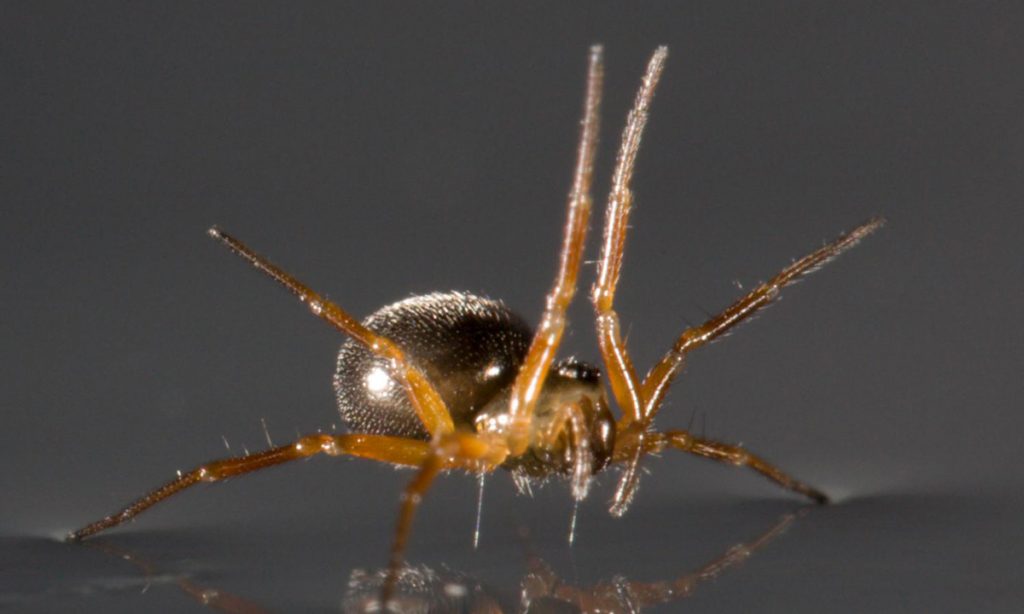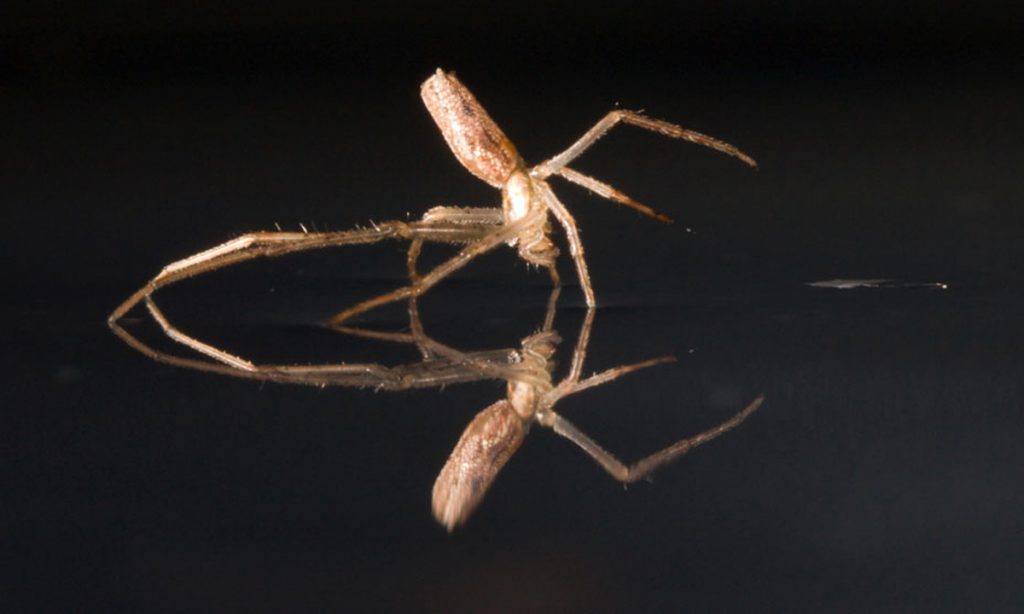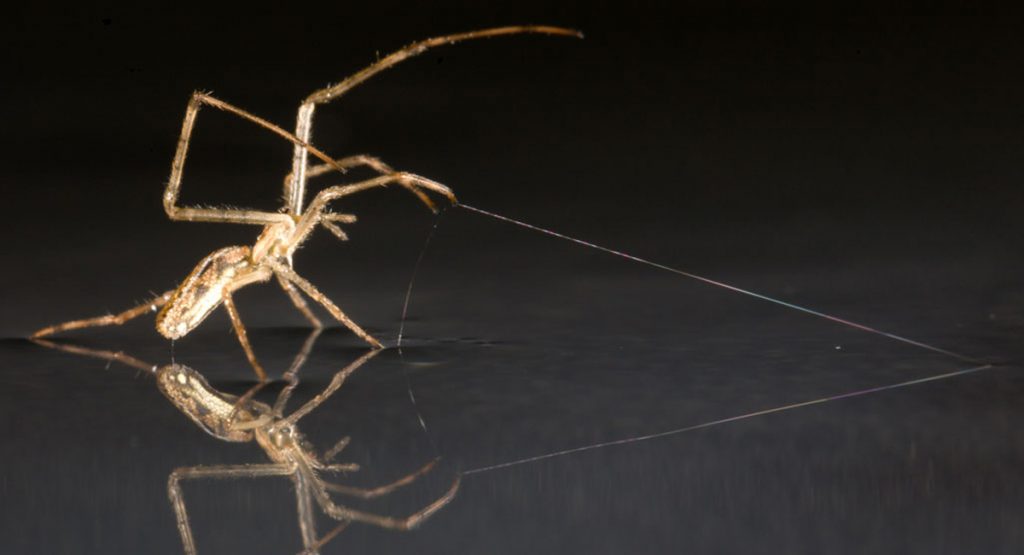
Spiders are often one of the first species to colonize new habitats, and many species are found in multiple locations — including multiple continents. In other words, spiders get around.
Scientists as far back as Charles Darwin have studied an intriguing mode of spider transportation: ballooning, or floating through the air on a thin strand of silk, before coming to rest on a tree or other object. But this kind of travel is a bit risky since the spiders can’t control their direction or where they land — and researchers assumed that any unlucky spiders who landed at sea were doomed.
That was until recently when Japanese researcher Morito Hayashi researched spiders’ behavior in a body of water at the University of Nottingham and made several surprising discoveries.

Being placed in a shallow tray of water and hit with bursts of air was no big deal for the spiders Hayashi studied, including hundreds of individuals from more than 20 species. The spiders were observed raising their forelegs or abdomen to form sails, which they used to catch and direct the air around their bodies.

Hayashi also observed spiders using other water-navigation tactics, including walking on water, extending a strand of silk to anchor themselves to floating objects, and playing dead to avoid a perceived threat. Even when the spiders stopped moving and played dead, they continued to float thanks to water-repellent feet which didn’t break the water’s surface tension.
Hayashi’s research answers a number of questions about how spiders have managed to spread their populations so widely across the globe, traveling to and establishing themselves in nearly every habitat on earth. Most of the planet is made up of water, after all, but a river, sea, or ocean has proven to be no barrier to an aquatic expert like these spiders. For them, it’s just smooth sailing.
The full results of the study were published in the journal BMC Evolutionary Biology.




